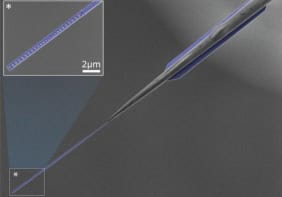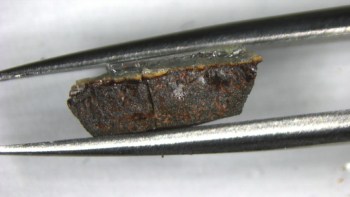Magnetism is the latest property to be found in a polymer. Magnetism has traditionally been restricted to compounds containing metal ions, but last month researchers made a carbon-based magnet. Now Andrezej Rajca and colleagues of the University of Nebraska have developed a polymer that has both ferromagnetic and antiferromagnetic properties. Moreover, it is 100 times more magnetic than the recently discovered carbon magnet (A Rajca et al 2001 Science 294 1503).

The building blocks of the polymer made by the Nebraska team contain 14 benzene molecules – rings of six carbon atoms and six hydrogen atoms. The electrons in the benzene ring become ‘dissociated’ and move freely around the rings – that is, the system is ‘conjugated’.
In each building block, the benzene rings are arranged into two ‘modules’. One module is a ring, or ‘macrocycle’, of eight benzene molecules. The other module contains the remaining six benzene molecules, and forms two branches that lead to the next building block. Magnetism arises in the polymer because the electrons behave differently in these two modules.
Dissociated electrons move freely through the macrocycle module of the unit, and their spins are strongly related, which gives the module a large magnetic moment. In contrast, the motion of the electrons in the two branches is limited, and this gives the second module a small magnetic moment.
When the building blocks are joined together to form the polymer, these strong and weak magnetic moments alternate along its length. The strong magnetic moments all point ‘upwards’ and the weak magnetic moments point either ‘upwards’ or ‘downwards’. As a result, the polymer has both ferromagnetic and antiferromagnetic properties.
Because the relationship between the alternating ‘modules’ in the polymer is weak, the magnetic properties only exist below 10 kelvin. At higher temperatures, the weak coupling is drowned out by thermal motion.
According to Rajca, the new polymer has a ‘saturation magnetization’ around twenty times weaker than iron at room temperature, but a hundred times stronger than recently discovered ‘magnetic carbon’. Saturation magnetization is the magnetic moment per unit volume when the spins in the material are fully aligned by an external magnetic field – this is a key measure of how ‘magnetic’ a material is.
Rajca is open-minded about possible uses for his team’s polymer, which is rather soft. Polymeric conductors are now used as light-emitting diodes in large-area displays, he points out, but researchers could not have predicted this application when the materials were invented 20 years ago. “The importance of our polymer is that it illustrates that conjugated organic polymers can be made magnetic” he told PhysicsWeb.



